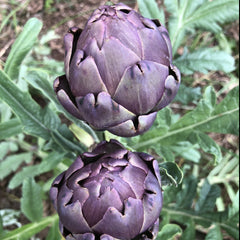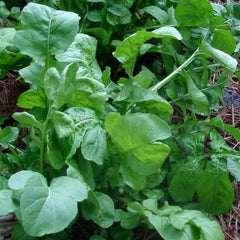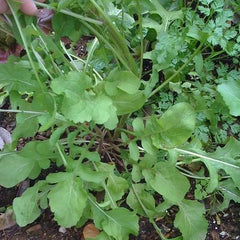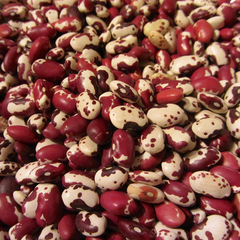Corn, Spero’s Orange Sweet (se) (90 days)
Zea mays
This is a work in progress breeding project that we are sharing an early release of if you are so curious that you don’t want to wait for the finished project which is still 2-3 years from now. Originally initiated by late great sweet corn breeder, Jonathan Spero as a cross between the white sweet corn, Tuxana (which he bred) and a variety of different orange flint corns with the goal of breeding an orange sweet corn. Jonathan Spero passed away in 2020 and left the various crosses with some notes that I am grateful to have inherited. We grew the different crosses in 2021 and then have laboriously hand sorted the wrinkled (indicative of sweet corn) kernels from the rounded (flint type) kernels. If you are excited to join in the experiment of participatory plant breeding then we welcome you to give feedback as we move towards this homage of a pioneering organic plant breeder!
One Ounce (≈ 110 seeds)
CORN - Zea mays
Growing Tips: Plant corn by direct seeding 1-2” deep after soil has warmed to at least 70° (Triple Play, Painted Hills Sweet & Hooker’s are specifically adapted to cool soil planting so can be planted earlier in the season). You can also transplant corn for earlier crops, but you have to baby them a bit.
Plant Spacing: Seed 6-10 per foot and thin to 1 plant per 8-12”, rows should be 24-36” apart. Hill method: Plant 5-10 seeds 1-2” deep in a mound, which should be 4-5 feet apart. Grow squash in-between and plant pole beans in mound once corn has emerged. Works better with flour corn and popcorn as it becomes somewhat jungle-like to harvest sweet corn with this method.
Pests: Protect young seedlings from bird predation with floating row covers. A common novice gardener problem is to assume that their corn didn’t come up; when in actuality birds such as jays, robins and crows were digging and pulling up the young sprouts. Scarecrows, floating eye balloons and reflective tape are somewhat effective. Dogs are good, too. Corn earworms (which are actually the caterpillar stage of a moth) can be controlled by spraying Bt. (Dipel™ is a brand name of OMRI certified organic control). Or just bear with their minor inconvenience by chopping the tips off of infected ears.
Harvest: Sweet corn when it’s in the “milk” stage, which you can determine by finding an ear whose silks have dried, gently peeling back some leaves while the ear is still on the plant, then nicking a kernel and looking for milky liquid to ooze out. Clear fluid indicates that it is too early, no liquid – you’re too late, save for seed or flour corn. Raccoons can devastate a corn crop if they find it appealing. Some folks put a battery powered radio in their patch to provide a menacing noise deterrent to keep coons at bay.
Diseases: We have not experienced any significant diseases here in Oregon, but my counsel would be ample fertility from well-matured compost and foliar sprays of compost tea, fish emulsion and kelp when plants are young if you do experience yellowing or die back.
Seed Specs: Sweet: 125-225 seeds per/oz.; Popcorn: 250-300 seeds/oz.









